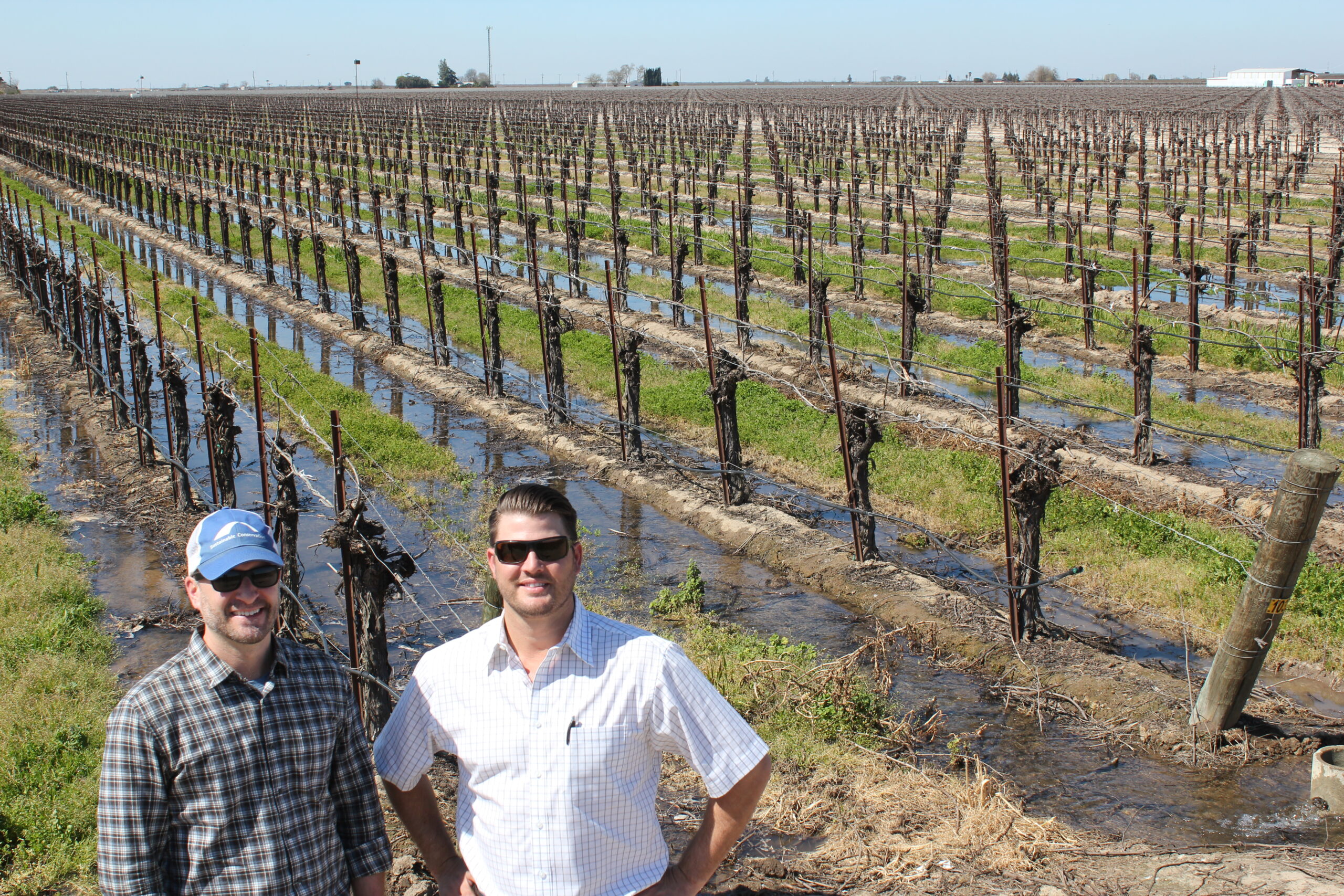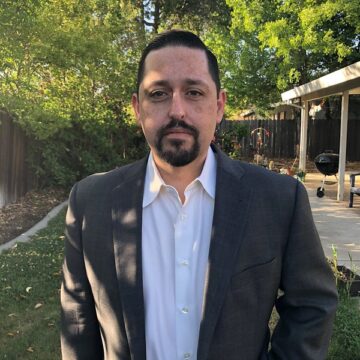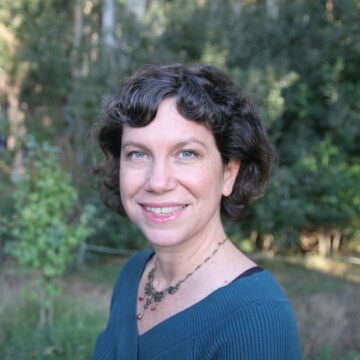
Sustainable Conservation’s Joseph Choperena and Madera Irrigation District grower Brian Davis recharging groundwater on a vineyard in 2019 – California’s last wet year. Photo: Alex Karolyi.
Media Contact: Christa Harader, Digital Content Producer, 415-977-0380 x308 charader@suscon.org
A WET START TO 2023: RETHINKING FLOODS AND AQUIFER RECHARGE
California’s current series of atmospheric rivers are wreaking havoc on the state and permeating our news cycle. Whenever it rains, the most common question we ask is, “Is the drought over?”
The answer? No, but it’s complicated. We have to pull peak flood flows off our waterways as these storms continue for community safety. What’s more, we can capture and store these floodwaters on floodplains, in basins, and on farmland for groundwater recharge and ecosystem benefits.
Groundwater recharge at scale could solve for up to 25% of the San Joaquin Valley’s groundwater overdraft.
California’s aging water storage and conveyance system is designed to capture steady Sierra snowmelt, not rain from flash storms that are today’s climate reality. Our leveed, channelized rivers mean swift waters threaten adjacent and downstream community safety. Our annual snowpack – one third of our water supply – is declining. Less water is available during our hottest months. Our droughts and floods are more severe than ever. And our groundwater, a key drought reserve when our reservoirs cannot meet agricultural and community needs, cannot keep up with demand. This means sinking lands, reduced river and stream flows for fish and wildlife, and water insecurity for over one million Californians.
Sustainable Conservation has over a decade of experience testing, siting, and scaling groundwater recharge and flood management solutions in California. From individual farmer fields to collaborative statewide studies to tailored software solutions, we’ve worked with growers, irrigation districts, water managers, UC researchers, consultants, agencies, and policymakers to make groundwater recharge an adaptable and powerful part of our drought resilience solutions portfolio.
Today, our Water for the Future program drives research on recharge methods, conducts field days for growers and water managers, develops tools and guidance for coordinated recharge programs involving thousands of growers, and works with state and federal agencies to implement incentives for recharge and to address barriers to floodwater diversion.
We must protect Californians and their homes, boost our river and species health, secure our drinking water supplies and quality, and transform the state’s river systems.
This is our watershed moment.
Our Track Record
We began in 2011 with one Fresno County farmer who diverted flood water over his vineyards to refill the aquifer under his land. We’ve grown this work into our flagship Water for the Futureprogram that drives integrated water management planning, implementation, research, and policy.
- 2011: With pioneering Fresno County farmer Don Cameron, tested a unique method for replenishing our underground water savings account: applying seasonal flood water to farmland.
- 2016: Developed a software tool (Groundwater Recharge Assessment Tool, aka GRAT™) in partnership with the Earth Genome to maximize groundwater recharge in regions suffering the most from depleted aquifers.
- 2017: Partnered with the California Department of Water Resources on a statewide strategy for recharge (Flood-Managed Aquifer Recharge, aka Flood-MAR) on diverse landscapes with multiple environmental benefits.
- 2017: Implemented operational GRAT™ in Madera Irrigation District with 107 farmers to recharge 4,000 acre-feet of water during winter and fall water seasons.
- 2019: Grew operational GRAT™ in Madera Irrigation District to 379 farmers recharging 10,700 acre-feet of water during winter and fall water seasons.
- 2021: Released guidance resources that help growers, water planners, and communities protect drinking water quality while replenishing aquifers.
- 2022: Completed Merced River Watershed modeling study with the California Department of Water Resources to demonstrate the integration of flood and groundwater management on a watershed scale.
- 2022: Implemented operational GRAT™ in Turlock sub-basin to support two Groundwater Sustainability Agencies (GSAs) and four irrigation districts to coordinate integrated water management decisions and multi-benefit project planning.
“As I lay awake last night hearing the creek-turned-river outside my back door getting louder and louder as the rain pounded down, all I could think of was the importance of diverting flood flows off of swollen rivers to protect life and property downstream. The opportunity to achieve significant recharge this year has the added bonus of reducing flood peaks. As we calculated in the DWR Flood MAR study for the Merced watershed, with full implementation of recharge programs coupled with reservoir management, climate change induced flood peaks can be reduced by 65%. I am excited that this can be the year when farmers, irrigation districts, and the state can start to see the need, and use Flood-MAR to adapt to the flood effects of intensifying atmospheric rivers and replenish our drought-induced groundwater depletion. It takes floods to realize California’s recharge potential.” – Dr. Daniel Mountjoy, Sustainable Conservation Director of Resource Stewardship
Meet Our Experts
For general press inquiries, contact Christa Harader at 415-977-0380 x308 or charader@suscon.org
Our experts are excited to share their work with you! Contact us for an interview and for more information on California water management.
More Resources
Browse our recharge photos and recent publications:




